It dates back to 1996/1997 (but not much has changed since then and the situation has probably worsened) and also includes a study of timber politics in Indonesia for the same period.
If after reading this, anyone still wants to support Taib and his gang of thieves, then they deserve what is coming to them.
The world’s tropical rain forests are important socially and environmentally as well as by virtue of their contributions to economic growth. As these forests are logged, their social values as generators of rural incomes and their environmental services as biodiversity reserves, carbon sinks, soil reserves, and watersheds tend to diminish.
Despite these facts, most governments in the tropics are unable to resist logging these forests in favor of national economic objectives, including: creation of a forest industrial sector, higher employment, positive balance of payments, and increased government revenues.
However, given the high economic stakes that can be obtained from their forests, it is seems counterintuitive that tropical governments rarely succeed in optimally harnessing government revenue from this valuable natural resource. This staggering loss of revenue to developing countries obviously has important implications for economic development. Timber revenue could be used, for example, to finance the kind of strategic industrial policies that allow the high performing Asian economies to achieve high levels of economic growth.
This dissertation argues that states with rain forests are often unable to collect optimal revenue from the massive profit earned by timber companies that harvest state forests because this profit already has a hidden destination.
Heads of state and their political supporters are siphoning off these moneys to become phenomenally wealthy. This dissertation focuses on the institutional conditions that determine whether "economic rent" earned from harvesting tropical rain forests ends up in government treasuries or in the private bank accounts of political elites.
........
Chapter 4 Unofficial Timber Rent Appropriation in
This chapter details the methods whereby the rulers of Sarawak,
Sarawak
Although Sarawak is only a state within the Federation of Malaysia and not a country,
During the period covered by this study,
The Sarawak Forest Department controls the majority of
At the top of the hierarchy is the minister of resource planning, who has sole discretion to give out logging concessions. Taib finds the time to hold this portfolio himself, along with that of chief minister. Under the law, he can grant concessions to anyone he wants: relatives, friends, political associates, or nominee shareholders - people who hold concessions on behalf of secret beneficiaries. The concessions are granted free of charge, and the holder isn't required to know the difference between a live tree and a telephone pole (Sesser 1989: 282).
The use of timber rent to further national and state political objectives is also important. As Chief Minister Taib Mahmud stated succinctly, "'
At the state level, the use of timber rent for political ends was perhaps best demonstrated in the
In early May [1985], Taib all but named three principal 'co-conspirators,' in a plot to oppose his leadership. . . . But the orchestrator of the machinations, Taib alleged, was his uncle. [The chief minister told this reporter that] the depressed timber market had put concession operators in a tight spot, leading in turn to pressure for relief on some payments to business partners [‘business partners’ here denotes
The
Table 4.1 Natural forest timber concessions granted and revoked by Chief Minister Taib during his first twelve years in office, 1981-1993
| Year | Number of concessions granted | Number of concessions revoked |
1981 | 7 | 0 |
1982 | 3 | 0 |
| 1983 | 8 | 0 |
| 1984 | 17 | 2 |
| 1985 | 35 | 1 |
| 1986 | 19 | 10 |
| 1987 | 36 | 26 |
1988 | 13 | 7 |
1989 | 7 | 4 |
1990 | 23 | 21 |
| 1991 | 4 | 3 |
| 1992 | 6 | 4 |
| 1993 | 24 | 20 |
Source: Annual Reports of the Sarawak Forest Department (1981-1993)
Once the press reported which politicians would lose their timber concessions, events moved quickly. Threatened politicians flew to the Malaysian capital for a secret summit on unseating Taib. Tun Rahman, who had started a new party called Permas, led the rebels. The rebels also included PBDS, a party that had broken away from the ruling coalition. The rebels planned to bring a vote of no confidence in the state assembly and to obtain a parliamentary majority. Chief Minister Taib responded to this threat by dissolving the state assembly and by calling for elections to be held a month later. The rebels responded by promising cash payments of $500,000 to every state assembly contestant who joined the opposition camp, a sum that would have been paid out of timber rent had the opposition won. However, in the end, Taib maintained his power. These events are summarized in Table 4.2.
Table 4.2 Dates and key developments during the
| Date of event | Key development |
| Friday, 6 March 1987 | People’s Mirror carries story of Chief Minister Taib’s intention to put a “Screen on Timber Licenses” (Ritchie 1987: 18). |
| Sunday, 8 March 1987 | Anti-Taib rebels fly from Kuching (capital of Sarawak) to |
| Monday, 9 March 1987 | Secret meeting begins at |
| Tuesday, 10 March 1987 | Four ministers, three deputy ministers resign from Taib’s cabinet and join the opposition. Taib announces at press conference that there is a plot forming against him at the |
| Friday, 13 March 1987 | Taib dissolves the |
| 15-16 April 1987 | Statewide elections are held. Pro-Taib forces prevail, maintaining a majority of seats in |
The
To illustrate the high cost of buying elections, the ruling party spent about $400 per voter, or $4 million to defeat a candidate for the state assembly, Chiew Chin Sing, who would have represented only about 10,000 voters.[6] During the weeks approaching the election, ten different teams of senior Sarawak Alliance officials, their officeholders and retinues visited all of the 180 longhouses in the district, holding parties each night in ten different longhouses. [7] Chiew explained how these 10,000 voters were wooed:
Expenses were as follows: most members of the traveling parties were paid a salary. For each longhouse party that was held, five pigs and fifty cases of Heineken beer were purchased. In addition to the good times at the parties, where many promises were made, each family was given RM1,200 ($480) to vote for Chiew’s opponent.
[T]he High Court made political history when it declared an election victory by the ruling Barisan Nasional (BN) coalition null and void due to vote buying. The judge ruled that "vote buying was so extensive [that] it had affected the election result" in the Bukit Begunan constituency in the September 1996
For timber conglomerates themselves, so long as they are willing to make money available to the ruling party during election time, this will ensure their ongoing ability to gain access to new timber concessions as they exhaust old ones. Some conglomerates control so many concessions because during election time senior politicians come to them for campaign donations. Once the politician has been re-elected the timber conglomerate comes back to the politician and requests his help in obtaining new concessions from the chief minister (26 May 1997 interview with Lao Siew Chang).
When political supporters serve as board members and shareholders in timber concessions, they do not simply serve as a conduit for funds to the ruling party during election time but also gain personal wealth as a payment for their loyalty. At some level, it is a meaningless exercise to try to determine whether a political supporter's position on the board of a timber company signifies that they are there to get rich and in exchange for that privilege remain loyal to the chief minister, or to finance the political expenses of the chief minister’s party. According to James Chin, board members and major shareholders work both for themselves and their parties, depending on the electoral cycle. If it is not election time, then the board members and major shareholders bank substantial salaries.[8] However, if it is election time, especially during the final months, the political supporter is expected to contribute funds to the ruling party. If they do not perform this latter function or if they have otherwise demonstrated disloyalty, when their concession is up for renewal the "chief minister asks the forestry department to rigorously enforce" its regulations with respect to that disloyal politician's concession, which provides a pretext to deny the renewal of the concession (30 June 1997 interview with James Chin).
In short, timber wealth is used both to create wealth for the chief minister and his political supporters and to ensure his political longevity. My analysis rests on a review of the managerial and equity profiles of the timber concessions licensed to each of the state's four largest private timber groups and more general types of information on the state's fifth through ninth largest private groups.
Table 4.3 Ranking of
| Rank | Name of timber conglomer ate | Senior figure | Total area (hectares) | Source(s) |
1 | Samling group | Yaw Teck Sing | 1,636,320 | Samling Corporation internal document obtained 22 October 1996; written estimates of a Sarawak-based researcher obtained 15 November 1996. |
2 | Rimbunan Hijau group | Tiong Hiew King | 1,500,000 | Remarks of William Wong, head of investor relations for Jaya Tiasa, Rimbunan Hijau’s publicly listed flagship, during a 29 October 1996 visit to Rimbunan Hijau headquarters. |
| 3 | Taib family group | Chief Minister Taib Mahmud | 998,011 | Ritchie 1987: 84-85; |
| 4 | KTS group | Lau Hui Kang | 500,000 | The Edge 1995d |
| 5 | WTK group | Wong Tuong Kwang | 400,000 | The Edge 1995d |
| 5 | Shin Yang group | Ling Chiong Ho | 400,000 | |
| 7 | Ting Pek Khiing group | Ting Pek Khiing | 311,239 | Business Times 1992a&b; Jardine Fleming 1993; Star 1995b |
8 | Limbang Trading | James Wong | 185,490 | Asian Wall Street Journal 1994b |
9 | Ling group | Ling Beng Siew | 120,000 | |
Sarawak’s and
[1] Prior to assuming the chief ministership, Taib held seven different federal cabinet portfolios between 1968 and 1981, including Minster of Defense, Minister of Federal Territories, and Minister of Primary Resources. As Minister of Primary Resources Taib was nearly sacked for taking a large bribe from an oil company (23 May 1997 interview with a reliable and informed academic).
[2] Actually, there is no "Dayak" group as such. "Dayak" is in fact a catch-all phrase intended to encompass the non-Chinese and non-Malay indigenous groups of Sarawak, including the Iban, the Bidayuh, and the orang ulu - the latter being a name for the myriad of groups that live far upriver in Sarawak's hilly interior, and have been most deleteriously affected by the state's timber industry.
[3] Toward the end of his tenure as Prime Minister of Malaysia (1976-1981), Hussein Onn effectively forced Sarawak's chief minister of that time, Tun Rahman, from office. Hussein regarded Tun Rahman as corrupt and as the ally of Hussein's predecessor Tun Abdul Razak. Tun Rahman went on to assume the governorship of Sarawak. His replacement in the chief ministership was his nephew Taib Mahmud. However, many of Tun Rahman's loyal lieutenants remained in office. "As a result, fissures gradually emerged between those owing loyalty to the new Chief Minister, and those owing their allegiance to the Governor" (Leigh 1991: 181). A war of words and actions ensued between the two men starting in late 1984. In 1985, Tun Rahman sent a public letter to Taib criticizing him, and accusations against Taib began to appear in the then-Rahman-controlled Sarawak Tribune. As governor, Tun Rahman had the power to call a state assembly session, in which, if 25 votes could be gotten, Taib would be removed from office. Taib moved quickly to head off the threat posed by his uncle. With the imprimatur of then-Malaysian Deputy Prime Minister Musa Hitam, Taib appointed a new governor, removing his uncle from that post, and began to purge pro-Tun Rahman figures from the government ranks (26 May 1997 interview with a reliable and informed academic). Tun Rahman rallied for a final attack on his nephew two years later in the Ming Court Affair.
[4] According to Ritchie, "when Taib was vacationing abroad with his family and seeking medical treatment for a sinus problem,"two Sarawak politicians traveled to
[5] Taib accused these timber concessionaires of violating Sarawak timber management regulations. But virtually all timber concessions in insular Southeast Asia are in violation of at least one of a host of timber-related laws at any given time. Therefore, the head of state can technically find any concessionaire to be guilty of noncompliance at any time.
[6] Another source who was in Sarawak for the 1996 state elections said that on the final day before polling, he saw RM660,000 ($264,000) in bribes being given out to voters in a single location. The bribes ranged in size from RM600($240) for each indigenous voter to RM2,200 ($880) for each Malaysian Chinese voter (1 October 1996 interview with a knowledgeable Sabah-based source)
[8] Chin estimates that a Sarawak politician serving on the board of a typical timber concession banks between five and eight percent of the total profit of the concession.
[9] While many believe Sarawak's and Malaysia's largest timber group is Rimbunan Hijau, an internal spreadsheet compiled by a Samling employee put the total number of Samling concessions at 18, with four in Lawas, seven on the upper Baram region, and seven near Bintulu (Samling 1996). This total just over 1.6 million hectares, which just edges out the 1.5 million hectares of “official” holdings acknowledged by a Rimbunan Hijau official (26 October 1996 interview with William Wong). Samling is also the world’s largest owner of Caterpillar tractors (22 October 1996 interview with Samling official).
[10] A well-placed and knowledgeable Sarawak source suspects that Samling is owned by the chief minister's family through nominees (26 May 1997 interview).
(To be continued)










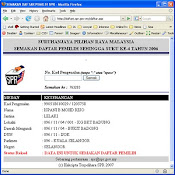















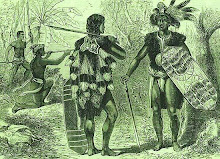





















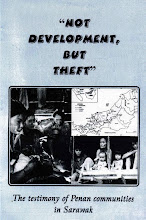
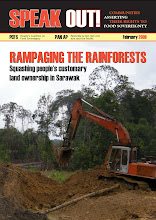





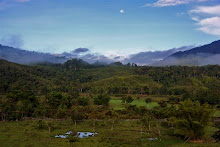



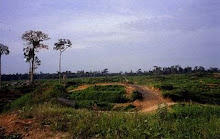

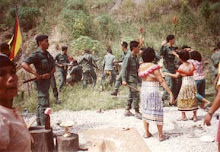





















9 comments:
This is what I am looking for!!
Thank you. will add in my blog later!
Why are you posting it in bits and pieces ? We want to know . make sure this is the beginning of the end for Taib. Please do not waste time! Hit when the iron is hot and when people are interested. We do not want to go back and forth. No strip tease please. This is supposed to be very serious business.
A group of friends and I went for a trek into the Sarawak jungle last February to meet the Penan tribes.
It was more of a self-discovery on our part to learn about the struggle of Sarawak tribes.
Here are my photos from the trip.
Sad isn't it? There were logging activities EVERYWHERE! I wonder how these friendly Penans will survive in years to come.
Better translate it into different language and send it to PRK. Hoping they can spread the word to all the longhouse at sarawak
Better the timber revenue goes to the federal government so that at least Sarawak have fixed royalties.
At the moment, 100% of the profits goes to the private timber companies in which Sarawak BN leader have indirect shares.
Sarawakian got big fat 0% from the timber revenue and yet, the jungle has been cut naked.
http://malaysiadigest.blogspot.com
Looks like we Sarawakians are well and truly screwed! Unless, of course, the people stand up and be counted en mass. And make buying of votes illegal - that will be a good start.
abot, It does take time to upload 300+ pages to my blog, which is why I have given a link to the full dissertation so that those who do not want to be "strip-teased" may download it themselves and read at their leisure. It would be good as well if they could spread it around. I think David Brown has done a very good job. It is now up to Sarawakians themselves to finish the job!
Thank you so much, mate! Make a big dream and make it comes true. No matter you are dayak, melanau, melayu or chinese, As a sarawakian, I fully support you. Keep it up. I want to see your article in this blog.
Sir,
Please send me a copy to my e mail , and we can spread it extensively through the internet, it will be so fast via net working!! You can still continue to download part by part on your blog!!Proceed on more fronts.. right .
I cannot wait another 50 years ( am now 53 yrs old !!) , lets put the heat on , lets have a head start before the next state election !! This fella has been raping sarawak for too long. We want our titles to native land !! Those bloody useless native ADUNS in the current government will never do it for us! Not in their lifetime , so they have to be kicked out !! Thank you.
Post a Comment